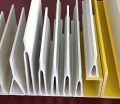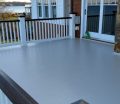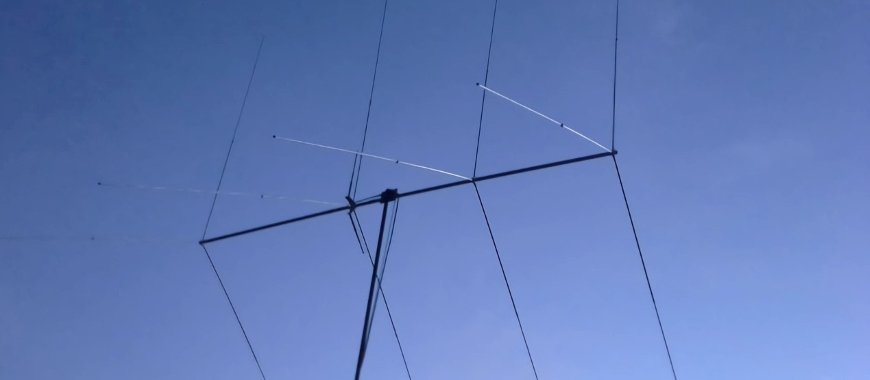
Fiberglass 3 element beam CB antennas are essential tools for enhancing CB communication by focusing the signal in a specific direction. These antennas, like the ones produced by GangLong Fiberglass, are known for their sturdy construction using high-quality fiberglass materials, which provide excellent durability and weather resistance. The fiberglass 3 element beam CB design ensures efficient transmission and reception, delivering higher gain and better signal focus compared to standard omnidirectional antennas. Its structure typically includes three elements aligned in a Yagi formation, helping users achieve clearer signals over longer distances. With the right setup, these antennas can significantly improve communication clarity and range, making them a popular choice for both amateur and professional users. Fiberglass 3 element beam CB antennas enhance communication with a rugged design, reliable signals, and efficiency in all conditions.
What is Fiberglass 3 Element Beam CB?
The fiberglass 3 element beam CB is a highly efficient antenna system specifically designed for applications requiring high strength, lightweight construction, and resistance to environmental factors. The fiberglass 3-element beam CB is a specific type or configuration within the broader category of fiberglass beams, designed for specialized structural applications. Its use in radio communications, particularly in CB (Citizens Band) radio setups, has made it popular among enthusiasts and professionals alike. Fiberglass, as the core material, offers superior durability and resistance to corrosion, making it an ideal choice for long-term outdoor usage. The three-element design enhances performance by focusing the signal and improving both transmission and reception quality.
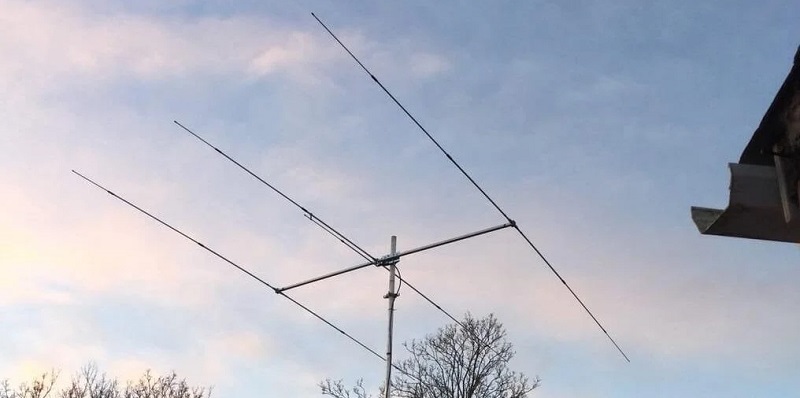
The Key of the Three-Element Design
One of the critical components of the fiberglass 3 element beam CB is its three-element design. In this configuration, there is typically one driven element (which is connected to the transmitter), a reflector, and a director. This arrangement helps to direct the radio frequency energy in a more focused manner, significantly increasing the gain and directionality of the signal. The result is a clearer transmission with fewer distortions over long distances.
Each of the three elements serves a specific purpose:
- Driven Element: This is the primary element connected to the transmitter, responsible for radiating the signal.
- Reflector: Positioned behind the driven element, it reflects energy towards the direction of the signal’s propagation, improving gain.
- Director: Positioned in front of the driven element, it helps to focus the signal in a specific direction, enhancing both transmission and reception range.
Benefits of a Fiberglass 3 Element Beam CB
The fiberglass 3 element beam CB offers several key benefits to users:
- Improved Signal Directionality: The three elements of the fiberglass beam work together to focus the radio waves, ensuring that signal strength is enhanced in the desired direction. This increases the effectiveness of transmissions and allows users to communicate over greater distances without interference.
- Lightweight and Sturdy: Fiberglass’s properties allow for the construction of a lightweight but strong beam that can easily be mounted without requiring heavy-duty supports. This makes it a preferred choice for both professional setups and amateur installations.
- Weather Resistance: A fiberglass 3 element beam CB can withstand extreme weather conditions. It is not prone to rust or corrosion, which is common with metal antennas, ensuring long-term usage even in outdoor environments.
- Long Lifespan: Due to its resistance to environmental degradation, a fiberglass 3 element beam CB can maintain its structural integrity and performance for many years, making it a cost-effective solution for long-term communication needs.
- Reduced Maintenance: Fiberglass requires minimal maintenance compared to metal beams, which need regular inspection and care to prevent rusting and structural damage. This makes it a hassle-free option for users who may not have the resources for ongoing maintenance.
- Versatility: A fiberglass 3 element beam CB can be used in a variety of applications, including home-based CB radio stations, industrial communication systems, and remote installations in areas where reliable communication is essential.
Advantages of Fiberglass in Antenna Construction
The use of fiberglass in the fiberglass 3 element beam CB offers several benefits over traditional materials like aluminum or steel. Fiberglass is lightweight yet strong, making it easier to install and handle without sacrificing durability. Its resistance to weather, corrosion, and ultraviolet rays ensures that the antenna can endure harsh outdoor conditions for extended periods without degradation.
Moreover, fiberglass is a non-conductive material, which can help reduce unwanted interference and improve overall signal quality. Its structural properties allow for a sturdy, flexible design that can withstand wind, rain, and other environmental challenges. GangLong Fiberglass provides a range of such products that leverage these materials to enhance antenna performance.
Performance of Fiberglass 3 Element Beam CB in Various Environments
The fiberglass 3 element beam CB performs exceptionally well in various environments, making it a versatile choice for different users. Whether it’s installed in rural areas, urban settings, or coastal locations, the fiberglass construction prevents corrosion and degradation from saltwater or moisture exposure.
In coastal regions where salt air can quickly corrode metal antennas, the fiberglass 3 element beam CB stands out as a corrosion-resistant option. It can be mounted on rooftops, towers, or poles without fear of rust or structural weakening over time. This durability ensures consistent performance across a range of weather conditions, providing reliable communication in any environment.
Performance Metrics for the Fiberglass 3 Element Beam CB
The performance of the fiberglass 3 element beam CB can be measured by several factors, including gain, front-to-back ratio, and bandwidth. Gain refers to how well the antenna amplifies the signal, while the front-to-back ratio measures how well it suppresses signals from the rear. Bandwidth defines the range of frequencies the antenna can handle efficiently.
- Gain: Typically, a fiberglass 3 element beam CB will offer a gain of around 8-10 dB, which provides significant amplification of the transmitted and received signals. This improvement can lead to longer communication ranges and clearer signals.
- Front-to-Back Ratio: This ratio, often in the range of 20-25 dB, helps ensure that unwanted signals coming from the rear of the antenna are minimized, leading to less noise and interference.
- Bandwidth: A wide bandwidth allows the fiberglass 3 element beam CB to operate effectively over a range of frequencies, making it versatile for different CB channels.
Fiberglass 3 Element Beam CB for Long-Distance Communication
One of the most notable benefits of the fiberglass 3 element beam CB is its suitability for long-distance communication. The high gain and focused signal direction provided by the three-element configuration make it ideal for users who require reliable communication over vast distances.
By narrowing the radiation pattern, this antenna type helps to focus the signal, ensuring that more energy is directed towards the desired target area. As a result, the fiberglass 3 element beam CB outperforms many omnidirectional antennas in scenarios where communication across longer ranges is critical.
The Key of Using a Fiberglass 3 Element Beam CB for Long-Distance Communication
A fiberglass 3 element beam CB antenna is particularly effective for long-distance communication. By focusing the signal in a single direction, it reduces interference from other signals and ensures that the transmission travels farther with minimal loss of strength. This is especially useful for communicating over open terrain, such as rural or coastal areas, where there are fewer obstacles to block the signal.
For those looking to maximize their communication range, a fiberglass 3 element beam CB is an excellent choice. GangLong Fiberglass models are designed with high gain and low SWR (standing wave ratio), which means they transmit with minimal energy loss, ensuring clear communication even at long distances.
Why Choose Fiberglass for Your Antenna Needs?
Choosing fiberglass for antenna construction offers numerous advantages. The fiberglass 3 element beam CB combines durability, resistance to environmental degradation, and lightweight properties, making it an ideal choice for long-term outdoor use. Additionally, fiberglass antennas are easier to maintain and offer a longer lifespan than their metal counterparts, reducing the overall cost of ownership.
By selecting the fiberglass 3 element beam CB, users benefit from a superior antenna system that delivers exceptional performance while requiring minimal upkeep. This makes it a popular choice for those seeking reliability, longevity, and strong performance in their communication systems.
Compatibility with Various CB Radio Systems
The fiberglass 3 element beam CB is compatible with a wide variety of CB radio systems, ensuring flexibility for users. Whether you are using the antenna for hobbyist activities, professional communication, or emergency setups, its versatile design makes it adaptable to numerous radio transceivers.
Many users prefer the fiberglass 3 element beam CB for its ability to integrate seamlessly with existing radio equipment while delivering improved performance over stock antennas. GangLong Fiberglass designs these antennas to meet industry standards, ensuring that users experience enhanced performance without the need for additional modifications.
Customization Options for Fiberglass 3 Element Beam CB
Customization is another area where the fiberglass 3 element beam CB excels. Users can opt for various modifications to suit their specific needs, such as adjusting the element length or adding additional components for enhanced gain. These customization options allow the antenna to perform optimally in different operating conditions, whether for short-range or long-range communication.
GangLong Fiberglass offers a wide array of customization services, including adjusting the antenna’s bandwidth and gain characteristics to match individual user requirements. This flexibility ensures that the fiberglass 3 element beam CB can be tailored for various uses, from hobbyist CB radio setups to professional communication systems.
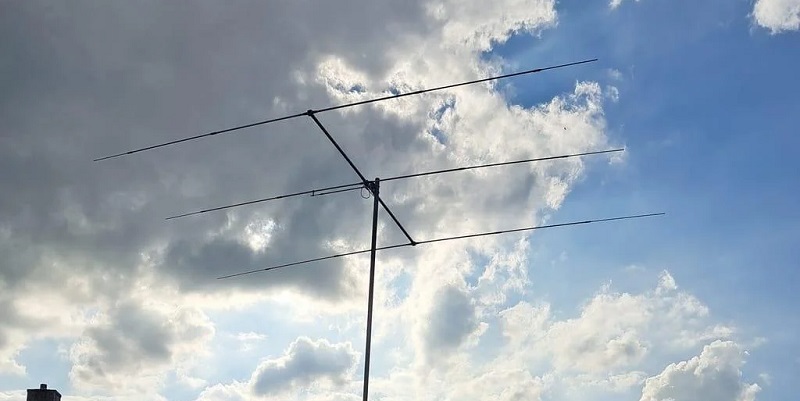
GangLong Fiberglass Antenna Solutions
GangLong Fiberglass is known for manufacturing high-quality fiberglass antennas, including the fiberglass 3 element beam CB. These antennas are designed to offer superior performance in demanding environments, delivering exceptional signal clarity and range for various communication needs. By choosing GangLong Fiberglass, users benefit from a durable and efficient antenna system built to last, even in the harshest conditions.
The company specializes in customizable solutions that cater to specific user requirements, ensuring that each fiberglass 3 element beam CB meets the highest standards of quality and performance.
The Key of Fiberglass 3 Element Beam CB Construction
The fiberglass 3 element beam CB antenna consists of three main components known as “elements.” These elements are arranged in a Yagi formation, which includes a driven element, a reflector, and a director. The driven element is where the signal is transmitted or received, the reflector enhances the forward gain by reflecting the signal, and the director helps to focus the signal in the intended direction. This combination of elements helps create a high-gain, directional beam, which improves the clarity and range of communication.
GangLong Fiberglass manufactures these antennas using high-quality fiberglass, known for its strength and flexibility. Fiberglass ensures the antenna is lightweight yet strong enough to withstand wind and weather impacts. Furthermore, fiberglass resists corrosion, making these antennas perfect for long-term outdoor use.
How about Gain and Signal Focus in a Fiberglass 3 Element Beam CB?
One of the key features of a fiberglass 3 element beam CB antenna is its gain. Gain refers to the antenna’s ability to increase the strength of the signal in a particular direction. Higher gain means that the antenna can transmit and receive signals over a longer distance without interference. For a fiberglass 3 element beam CB, this gain can range between 8.5 dB and higher, depending on the specific model.
The directional nature of the fiberglass 3 element beam CB also plays an important role in its performance. Unlike omnidirectional antennas, which scatter signals in all directions, the 3 element beam focuses the signal in a single direction. This focus increases signal clarity and minimizes noise from other directions, ensuring clear communication even in areas with multiple signals or obstacles.
Materials Used in a Fiberglass 3 Element Beam CB Antenna
Fiberglass 3 element beam CB antennas by GangLong Fiberglass are built from high-grade materials designed to last. The elements of the antenna are made from fiberglass, which is renowned for its durability, lightweight properties, and resistance to environmental factors like UV exposure, rain, and snow. Fiberglass antennas are also resistant to rust and corrosion, which makes them ideal for outdoor installations, especially in coastal or humid environments.
The use of fiberglass ensures that the antenna remains structurally sound even after years of exposure to the elements. This is crucial for maintaining the performance of the antenna, as any degradation in the materials can lead to a loss of signal strength or focus.
What are the Dimensions and Specifications of a Fiberglass 3 Element Beam CB?
The fiberglass 3-element beam CB antenna comes in various sizes and configurations, each designed to suit different communication needs. A typical GangLong Fiberglass model, which incorporates a wide flange beam fiberglass design for enhanced structural strength and stability, may have elements that are several meters long. For instance, the director element could be around 5.7 meters long, while the overall turning radius of the antenna may be around 3.2 meters. These dimensions, combined with the wide flange beam fiberglass construction, ensure that the antenna can capture and focus signals effectively while maintaining durability and performance in various conditions.
In terms of power handling, a fiberglass 3 element beam CB can typically handle up to 1000 watts of continuous power, making it suitable for high-power transmissions. Some models can even handle short bursts of up to 3000 watts, which is essential for overcoming long-distance communication barriers.
The impedance of these antennas is usually around 50 ohms, which is standard for most CB radio systems. This impedance ensures that the antenna is compatible with a wide range of CB radios without the need for additional tuning or adjustments.
Fiberglass Oak Beams vs Polystyrene Beams: Which is Better
Installation Tips for a Fiberglass 3 Element Beam CB Antenna
Installing a fiberglass 3 element beam CB antenna requires careful planning and the right tools. The placement of the antenna is crucial for ensuring optimal performance. Since these antennas are directional, they should be installed in a location where they have a clear line of sight in the direction you wish to communicate. Obstructions like trees, buildings, or other structures can interfere with the signal, so the higher the installation, the better.
GangLong Fiberglass antennas are designed to be mounted on masts with diameters ranging from 35 to 50 millimeters. It’s important to secure the antenna properly to prevent it from moving in strong winds, which could affect signal focus and strength. Proper grounding is also essential to protect the antenna and the connected equipment from lightning strikes.
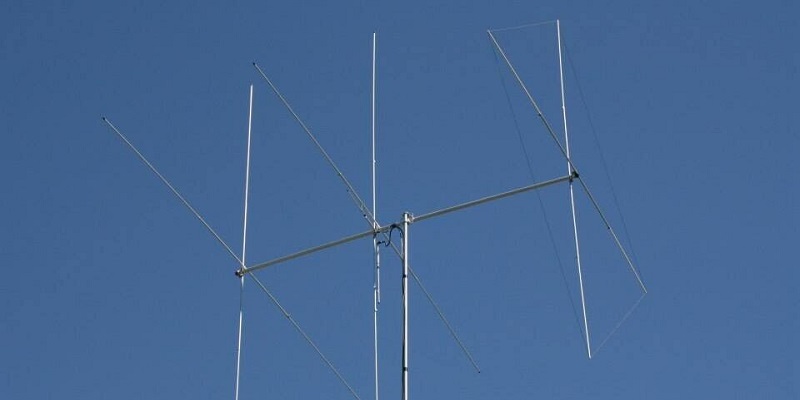
Installation Steps for a Fiberglass 3 Element Beam CB
Installing a fiberglass 3 element beam CB requires a methodical approach to ensure optimal performance. Below are the steps typically followed:
- Preparation: Ensure you have all necessary tools and equipment ready. This includes mounting hardware, coaxial cables, a power source, and the fiberglass 3 element beam CB itself. Safety equipment like gloves and a ladder (if needed for elevated installations) should also be on hand.
- Select a Mounting Location: The location for mounting should be elevated and free from obstructions like trees or buildings that could interfere with the antenna’s line of sight. Higher installations generally provide better performance as they reduce signal interference.
- Assembly of Elements: The fiberglass 3 element beam CB is typically shipped in parts. Carefully assemble the elements following the manufacturer’s instructions, ensuring that all parts are securely fastened.
- Mounting the Beam: Attach the beam to the mounting bracket or mast. It is essential to ensure that the beam is level and securely mounted. The angle and direction of the beam should be adjusted to optimize the signal based on the primary communication target.
- Connecting the Coaxial Cable: The coaxial cable connects the CB radio to the fiberglass 3 element beam CB antenna. Ensure the connectors are securely fastened and that the cable is free from kinks or sharp bends that could cause signal loss.
- Grounding the Antenna: Grounding the fiberglass 3 element beam CB is crucial for safety, especially in areas prone to lightning. Install a grounding rod or use existing grounding systems to protect the installation from potential surges.
- Testing the System: Once everything is installed, test the system by transmitting and receiving signals through the CB radio. Fine-tune the beam’s direction if needed to improve signal clarity.
Installation and Setup Considerations
Proper installation of the fiberglass 3 element beam CB is crucial to ensuring optimal performance. The antenna must be positioned at an adequate height to maximize signal reach and minimize obstructions like buildings or trees that may interfere with transmission.
Here are some installation tips:
- Height: Elevating the antenna improves signal reception. Ideally, the fiberglass 3 element beam CB should be mounted at least 30 feet above the ground for the best performance. Similarly, a hex beam fiberglass antenna, known for its compact and efficient design, also benefits significantly from being installed at a sufficient height to reduce interference and maximize signal clarity.
- Orientation: The beam must be oriented correctly towards the direction of the target transmission. This alignment helps in maximizing the gain and enhancing signal clarity.
- Secure Mounting: Since fiberglass is lightweight, it may be more prone to swaying in high winds. It’s essential to use strong mounting brackets and secure the antenna tightly to prevent movement that could affect performance.
How about Tuning and Maintenance of a Fiberglass 3 Element Beam CB Antenna?
To get the best performance from a fiberglass 3 element beam CB antenna, it is important to tune it properly. Tuning ensures that the antenna operates at its optimal frequency range and minimizes SWR, which can cause signal loss and interference. Most GangLong Fiberglass antennas are designed to be easy to tune, with adjustable elements that can be fine-tuned to the specific frequency you plan to use.
Maintenance is also essential for ensuring the long-term performance of the antenna. While fiberglass is highly durable, it’s still a good idea to inspect the antenna periodically for any signs of wear or damage. Check for any loose connections, corrosion on the metal parts, or cracks in the fiberglass. Regular maintenance will help prolong the life of the antenna and ensure consistent performance.
Maintenance Tips for a Fiberglass 3 Element Beam CB
While fiberglass beams require less maintenance than their metal counterparts, periodic checks are recommended to ensure long-term performance.
- Visual Inspections: Regularly check the fiberglass 3 element beam CB for any signs of wear or damage, such as cracks or loose connections. Extreme weather conditions can cause wear over time, so monitoring the condition of the beam ensures any issues are addressed promptly.
- Check for Signal Interference: Occasionally test the system to ensure there is no unexpected interference in the signal. If interference is detected, repositioning the beam or inspecting the coaxial cable may be required.
- Cleaning: Dirt and debris can accumulate on the beam, especially in outdoor installations. Gently clean the fiberglass elements using mild soap and water to maintain the beam’s performance.
- Recheck Connections: Over time, the connections between the elements and the mounting hardware can loosen, especially in windy conditions. Regularly tighten any loose bolts or screws to ensure the beam remains securely in place.
Maintenance Requirements for Fiberglass Antennas
The fiberglass 3 element beam CB requires minimal maintenance compared to metal-based antennas. Since fiberglass is resistant to corrosion, rust, and UV radiation, regular upkeep is not necessary. However, some routine checks can help ensure long-lasting performance:
- Visual Inspections: Periodically check for cracks or damage in the fiberglass material. While durable, severe weather conditions could impact its integrity over time.
- Connection Points: Inspect the connection points between the elements and the transmission lines to ensure that there is no looseness or corrosion that could degrade signal quality.
- Element Alignment: Occasionally, make sure that the three elements remain aligned as any shifts in their positions could affect performance.
Top Benefits of Using Fiberglass Porch Beams in Construction
Applications of a Fiberglass 3 Element Beam CB
The fiberglass 3 element beam CB can be utilized in a variety of applications due to its versatility and durability:
CB Radio Communication
One of the primary uses for the fiberglass 3 element beam CB is for Citizen Band (CB) radio communication. Whether for personal, business, or emergency use, this antenna enhances the transmission and reception range for CB radios, providing clearer communication over long distances.
Remote Installations
In remote areas where standard communication infrastructure is not available, a fiberglass 3-element beam CB can be used to establish reliable communication links. Its durability and weather resistance make it ideal for such environments, particularly when paired with complementary equipment such as a fiberglass battery spreader beam, which aids in safely supporting and managing power systems necessary for antenna operation in remote setups.
Industrial Applications
The fiberglass 3 element beam CB is often used in industrial settings where robust communication systems are essential. This can include oil rigs, mining operations, and large construction sites where communication over vast distances is required.
Emergency Communication
In disaster-prone regions, emergency responders rely on durable and long-range communication systems. The fiberglass 3 element beam CB provides reliable signal transmission during critical times, making it a valuable tool for emergency response teams.
Fiberglass Reinforced Glue Laminated Beams in Architecture
FAQS about Fiberglass 3 Element Beam CB
Fiberglass CB antennas are excellent for their durability and versatility, particularly in mobile and off-road setups. The fiberglass construction is resistant to harsh weather conditions, vibrations, and impacts, making it ideal for rugged environments. For beam antennas, like a 3-element fiberglass beam CB, they offer great directional focus, allowing users to achieve longer-distance communication with fewer interference issues compared to omnidirectional antennas. Their ability to withstand high winds and tough conditions makes them popular for permanent and semi-permanent installations. However, they are not as lightweight as some metal counterparts, which could be a factor in certain applications. When used with proper tuning and placement, fiberglass CB antennas can deliver strong performance and reliability for both casual and serious CB radio enthusiasts.
Yes, grounding is essential for all CB antennas, including fiberglass models, to ensure proper performance. Grounding minimizes interference, improves signal strength, and protects against static and electrical discharges. In beam CB antennas, like a 3-element fiberglass beam, grounding helps establish a stable reference point for the antenna’s electrical operation. This improves the radiation pattern and transmission range. For mobile applications, grounding is achieved through the vehicle’s metal chassis. In fixed installations, a proper grounding rod driven into the earth is necessary. While fiberglass antennas have non-conductive outer material, their internal conductive wire still requires a good ground connection for efficient signal radiation and reception. Without proper grounding, the antenna’s SWR (standing wave ratio) may increase, causing reduced range and potential damage to the radio.
The range of a 2-foot CB antenna depends on factors like terrain, power output, and antenna type. Generally, a short antenna like this might provide a communication range of 1 to 3 miles under normal conditions. However, with a well-tuned 3-element fiberglass beam antenna and optimal line-of-sight placement, you could achieve significantly greater distances. Beam antennas focus the signal in a specific direction, which can extend the reach to 10 miles or more in ideal conditions. To maximize range, ensure the antenna is properly tuned to a low SWR and avoid obstacles that may block or scatter the signal. While a 2-foot antenna may be less effective compared to taller or more sophisticated designs, beam antennas are an excellent choice for overcoming these limitations.
Firestik CB antennas are highly regarded for their quality, durability, and performance. They’re particularly popular among CB enthusiasts due to their user-friendly tunable tip design, allowing for easy SWR adjustments. While Firestik antennas are often associated with fiberglass whip models, they can be incorporated into beam setups like a 3-element design for enhanced directional communication. Firestik’s fiberglass construction offers excellent durability and weather resistance, making them ideal for both mobile and stationary use. They are versatile, working well in both short-range and long-range communication setups. When paired with a beam configuration, a Firestik antenna can deliver exceptional focus and signal clarity. Overall, they’re a reliable option for anyone looking for a high-performance CB antenna.
The best CB antenna depends on your specific needs, but for directional performance, a 3-element fiberglass beam CB antenna is a top choice. It provides enhanced range and focus by concentrating the signal in a particular direction, reducing interference and maximizing transmission distance. Beam antennas are ideal for base station setups where directional communication is key. For mobile use, high-quality fiberglass whips like the Firestik FS series are excellent options due to their ruggedness and tunability. A beam antenna excels in fixed installations for serious operators, while a whip is more suitable for versatile, on-the-go use. Regardless of the type, an antenna with low SWR, proper height, and good grounding ensures optimal performance.
The optimal height for a CB antenna is as high as possible, ideally above surrounding obstructions. For a 3-element fiberglass beam CB antenna, mounting it at least 30 to 50 feet above ground level is recommended to maximize range and minimize interference. Height improves the line-of-sight communication crucial for CB radios, especially for directional beam antennas. Placing the antenna higher also reduces ground clutter, which can weaken or scatter signals. Keep in mind local regulations for antenna height and structural stability when mounting your antenna. For mobile setups, ensure the antenna is positioned at the vehicle’s highest point to enhance performance. Taller installations generally lead to better range and clarity.
The best type of radio antenna depends on the application. For CB use, a 3-element fiberglass beam antenna is ideal for directional communication, as it provides superior focus and long-range capabilities. Beam antennas are perfect for base stations where consistent, long-distance communication is required. For mobile use, a high-quality fiberglass whip, such as a Firestik antenna, is more practical due to its durability and ease of installation. Omnidirectional antennas are better for general communication in multiple directions, while beam antennas excel at reducing noise and increasing range in specific directions. Matching the antenna type to your needs ensures the best performance.

As the editor of GangLong Fiberglass, I have years of experience and in-depth research, focusing on cable tray products, fiberglass solutions, and grille systems. I incorporate years of industry insights and practical experience into every content, committed to promoting the progress of the industry. At GangLong Fiberglass, my commitment is reflected in every product, from innovative cable trays to durable fiberglass solutions and sturdy grille systems. As an authoritative voice in the industry, my goal is to provide valuable information to professionals and businesses and promote forward-looking solutions.

